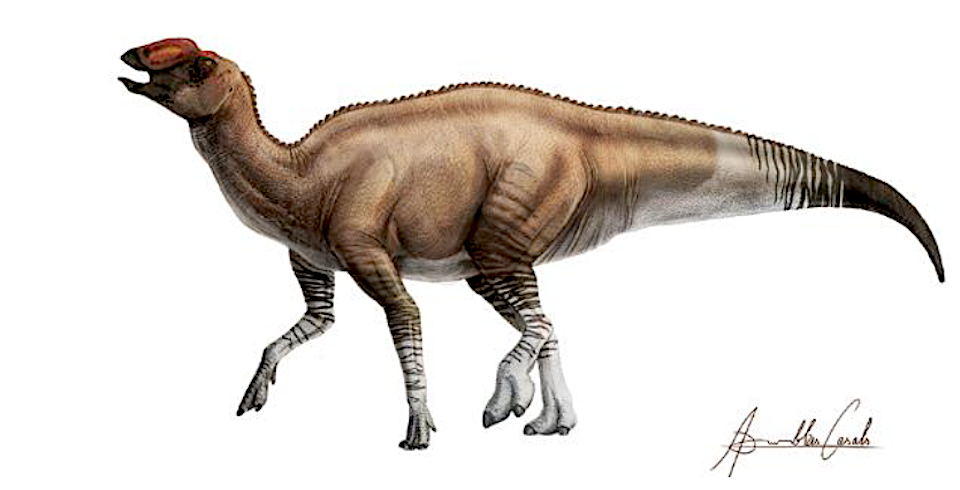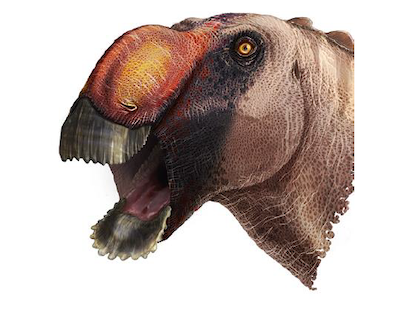
A new dinosaur species has been identified from fossilized remains found at Big Bend National Park 35 years ago/Illustration by ICRA Art
More than three decades ago, fossilized remains were pulled from the earth at Big Bend National Park. It wasn't until just recently, though, that the fossils were determined to be from a previously unknown species of duck-billed dinosaur.
The species, Aquilarhinus palimentus, is known for its aquiline nose and wide lower jaw, "shaped like two trowels laid side by side," a park release said.
The fossil was originally discovered in the 1980s by Texas Tech University Professor Tom Lehman. The bones were badly weathered and stuck together, making them impossible to study, the park said. Research in the 1990s revealed two arched nasal crests thought to be distinctive of the Gryposaurus genus. At that time the peculiar lower jaw was recognized, but it wasn’t until recent analysis that researchers came to realize that the specimen was more primitive than Gryposaurus and all other saurolophid duck-billed dinosaurs.
“This new animal is one of the more primitive hadrosaurids known and can therefore help us to understand how and why the ornamentation on their heads evolved, as well as where the group initially evolved and migrated from,” said lead author Dr. Albert Prieto-Márquez of the Institut Català de Paleontologia Miquel Crusafont, near Barcelona. “Its existence adds another piece of evidence to the growing hypothesis, still up in the air, that the group began in the Southwestern area of the U.S.”

An artist's interpretation of what this new dinosaur species might have looked like/Illustration by ICRA Art
Duck-billed dinosaurs, also known as hadrosaurids, were the most common herbivorous dinosaur at the end of the Mesozoic Era, and all had a similar looking snout. The front of the jaws meet in a U-shape to support a cupped beak used for cropping plants, park staff said. The beak of some species is broader than others, but there was no evidence of a significantly different shape (and therefore likely a different feeding style) until Aquilarhinus was discovered. The lower jaws of Aquilarinus meet in a peculiar W-shape, creating a wide, flattened scoop. Around 80 million years ago, this particular dinosaur would have been shoveling through loose, wet sediment to scoop loosely-rooted aquatic plants from the tidal marshes of an ancient delta, where today lies the Chihuahuan desert.
The significance of this discovery includes that the jaw and other characteristics of the specimen show that it doesn’t fit with the group of duck-billed dinosaurs known as Saurolophidae. It’s more primitive than this group, suggesting there might have been a greater number of primitive species than previously recognized. Saurophids had a cranial crest and the current specimen also had a bony crest, shaped like a humped nose. The discovery of a solid crest outside the group supports the hypothesis that both types of crest evolved from a common ancestor.
The work was conducted under permit from Big Bend National Park, as well as the Texas Vertebrate Paleontology Collections at The University of Texas at Austin, where the specimen is housed.



Add comment